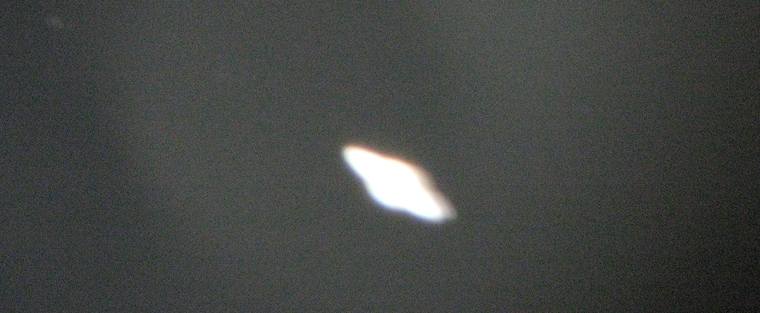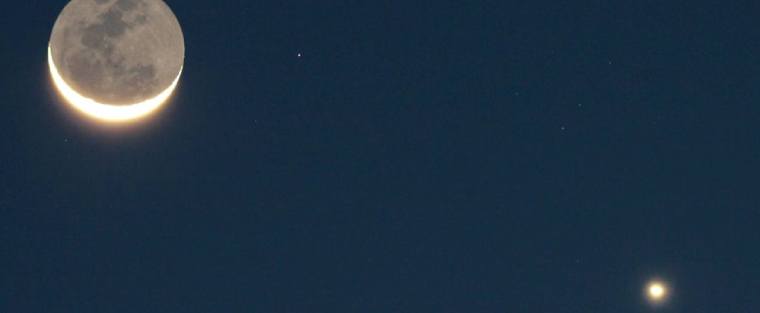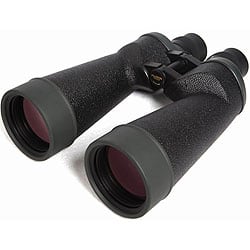Viewing Planets Through Binoculars
The following guide to viewing the planets with binoculars was written by the astronomer Philip Pugh and is part of a series on using binoculars for astronomy that he has written for Best Binocular Reviews.
In it, he answers some frequently asked questions like:
- How to see planets with binoculars
- What do the planets look like through binoculars
- What planets can you see with binoculars of different sizes and magnifications
- What planets can you see with 10x50 binoculars
Using Binoculars for Planet Viewing
Whilst a telescope is often the preferred instrument for viewing detail on the planets in our solar system, using binoculars to see planets does have it’s place, advantages and there are some objects that make suitable targets and are well worth viewing:
Portability, ease of use, price and a wide field of view are some of the advantages that a “planet binocular” has over a scope, however, unless you use very large, powerful binoculars, the bad news is that with a standard pair of binoculars you can never see detail on any planetary surface other than Earths!
However, there is good news and you can see some really interesting features which I will go through in this guide to viewing planets with binoculars.
On top of this, and like I went over in my guide to viewing the Moon with binoculars, you can observe the planets from urban and suburban locations and sometimes during twilight.

Jupiter
Jupiter is the largest planet in our solar system and is a good planet to view through binoculars.
For me, the best “feature” of Jupiter through binoculars is actually the combination of itself along with its four largest moons, all of which were discovered by Galileo and thus are known as the Galilean Moons.
All the moons appear as point light sources to most binoculars and do not look any different from stars. You will, however, notice that they each have different brightness, which is due to their side and the amount of light they reflect (remember unlike stars, planets do not emit light, only reflect it).
The innermost moon is called Io and is often too close to Jupiter to detect with small binoculars, although larger astronomy and planet binoculars, such as a 15x70 give you a much better chance of seeing it.
The next moon of Jupiter is Europa, which is almost identical to our own moon in size but is covered in ice.
The third moon is Ganymede, it is the largest moon in the solar system and larger than our moon and Mercury.
The outermost of Jupiter’s four moons is Callisto, which can even pass above or below Jupiter in its orbit.
All orbit Jupiter much more quickly than our moon, with Io only taking 1.8 days to complete each orbit.
Using binoculars, you can see them change position quite noticeably during a night. The moons are seen to “disappear” as they pass in front of, behind and through Jupiter’s shadow.
It is important to keep in mind that when the moons are very close to Jupiter, small lower powered binoculars cannot resolve the moons from the planet.
Only with my largest binoculars (15x70) have I been able to see all four moons at the same time, frequently.
I have never seen Jupiter’s cloud tops through any of my binoculars, but it is theoretically possible with much larger binoculars, such as 25x100. However, the cloud tops are a realistic target for spotting scopes and of course telescopes.

Saturn
Saturn is the second largest planet in our solar system and is famous for its rings. Because of these, it appears as an oval shape viewing it through most regular binoculars.
More powerful astronomy binoculars will reveal it to have lighter appendages on each side. When Galileo observed this, he likened them to handles.
It is very rare to see any space between the rings and the planet.
Over the years, Saturn’s rings become tilted at an angle to us from 0 degrees (edge-on) to 29 degrees.
You cannot see the rings through binoculars when they are edge-on, as they are very thin. Through spotting ‘scopes of at least 60mm aperture, the nature of the rings becomes much clearer.
Like Jupiter, Saturn has cloud tops, but you need a large aperture telescope to see them.
Saturn has several moons but only one, Titan, is visible using binoculars and only large ones of at least 60mm aperture.
Like Jupiter’s Galilean moons, it can disappear when in Saturn’s shadow. Titan can pass behind or in front of Saturn, but this is an infrequent event. Note: Titan can also be confused with background stars of similar brightness.

Venus
Venus is the brightest planet and can approach to within 25 million miles of Earth.
Why is Venus so bright?
The answer is a combination of factors: Venus is covered in highly reflective clouds which reflect about 65% of the sunlight that hits it. (the Earth reflects approx 35%, Mars and the Moon around 13-15%). Secondly, Venus is fairly large, (its radius is about 95% as large as Earth’s). Lastly, it is because of how close it is to Earth. Only Mars can get as close though it can never get as bright because it is smaller and less reflective than Venus.
Through binoculars, it shows phases in the same way that the Moon does. It can be round the other side of the Sun, when it has a small apparent size and shows a full disc, like the full moon.
When the Sun, Earth, and Venus are in a straight line, with the Sun in the middle, it is called superior conjunction and Venus is not visible at any time of day or night.
After superior conjunction, Venus appears in the evening sky. Although it is at a gibbous phase, it takes some weeks before you can distinguish it from a full phase. This is mostly because Venus appears very small and binoculars are not capable of detecting the slight phase change.
As time progresses, Venus sets later in the evening and you can detect the phase change in increasingly lower powered, small binoculars.
The photo above shows Venus just before it reaches its half phase when Earth, Venus and the Sun are at right angles to each other.
After half-phase, Venus moves closer to us, rather quickly, and appears brighter and closer to the Sun in the sky.
When my 15x70 binoculars first arrived, I looked at Venus and found it a thin crescent phase. At closest approach (called inferior conjunction), it nearly always passes above or below the Sun in the sky. Although it can cross the solar disc, it is not due for more than a hundred years.
After inferior conjunction, it can take as little as two weeks for Venus to appear in the morning sky. It appears as a thin crescent, then grows in phase, while shrinking in apparent size until it reaches half-phase and maximum distance in the sky from the Sun.
It then goes further around the Sun until it reaches superior conjunction again. The whole cycle takes about two years. The phase is all that you can see with binoculars, as the cloud tops do not show any features in normal light.
Mercury
Mercury is the smallest planet and is nearest to the Sun. Although it follows the same cycle of conjunctions as Venus, it never gets far from the Sun in the sky and is only visible for a few days at a time.
Seeing Mercury at all is a challenge. I have seen the 50% phase through 20x50 binoculars, but it is not easy.
Mars
Mars shows a small disc through binoculars of any size and I’ve never been able to see any surface detail, even when Mars was favorably placed.
Uranus and Neptune
Although you can see both of our outer planets through binoculars, they appear star-like, without any detail due to their small apparent size.
Further Reading
For more in this series and more in general on using binoculars for astronomy, take a look at these guides:
Guide to Choosing the Best Binoculars for Astronomy
Viewing the Moon with Binoculars by Philip Pugh
Guide to Using Binoculars for Astronomy by Philip Pugh
Best 10x50 Binoculars for Astronomy
Binocular Astronomy – Understanding Brightness & Magnitude by Philip Pugh
About Philip Pugh:
Philip describes himself as an “uninteresting person who does interesting things”. He had his first magazine article published in 1980 and has published four books in Patrick Moore’s “Practical Astronomy” series including those shown below.
Like nearly all writers, he has a “day job” and has spent most of his working life as a trainer or technical author. These days, astronomy is his only active interest outside of work and family. He is best known for his interest in the Sun and one of his many activities is to monitor activity using binoculars (with suitable filters). He is also a keen photographer and takes quality photographs using low-cost equipment.

 Article | Posted by Philip Pugh
Article | Posted by Philip Pugh 



 Categories:
Categories:  Tags:
Tags: 

